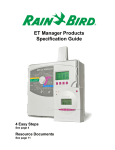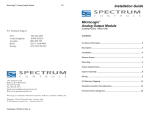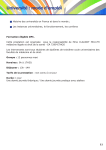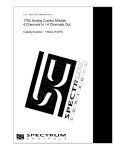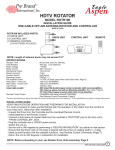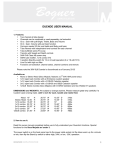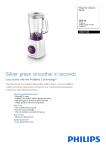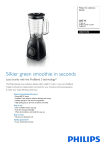Download Overdrive Amp User`s Manual - Ethos Overdrive Guitar Pedal
Transcript
ETHOS Overdrive Amp User’s Manual Provided to you by: www.customtonesinc.com Email: [email protected] Note: Specifications are subject to change without notice Page 1 ETHOS Overdrive Amp User’s Manual Key Features: Overview: The Ethos Overdrive Amp was inspired by one of the most sought after boutique guitar amplifiers ever made. Extensive time and attention to detail were required to emulate the tone and responsiveness of this amplifier. The key to Ethos tone, is its ability to transition from clean to overdriven tones just by the articulation of the guitar pick or guitar volume control. The Ethos not only offers great tone and touch sensitivity, but also provides a high degree of flexibility in one compact package. The Ethos provides two independent channels with an integral boost function resulting in 3 different footswitch selectable sounds. The Ethos can operate in many working situations as well. It can be used as a 30 watt guitar amp, a guitar amp pedal, a DI interface for broad band systems (e.g. PA, studio, or PC ) and a preamp that can feed a power amp/speaker • Dual Independent Channels with EQ – Overdrive – Clean • 30 Watt RMS Output Power into 8 ohms • Preamp Boost (OD Channel) • Speaker Simulation Output • Guitar Amp Compensation Circuit with Hi-Cut • Tone Stack Toggles including: – Brite – Modern / Classic – Jazz/Rock • Buffered Inactive Mode Mitigates Loading Effects • Compact Size packaged in a rugged die-cast aluminum chassis combination. Figure 1. Ethos Overdrive Block Diagram Boost OD Channel Guitar Amp Compensation IN Clean Channel Channel Select Hi-Cut GAC Select OUT Active Speaker Simulator Output Select PREAMP OUT POWER AMP IN Power Amp Note: Specifications are subject to change without notice Page 2 SPK SIM SPEAKER ETHOS Overdrive Amp Specifications: User’s Manual (Refer to Figure 2.) Feature Description Notes IN Jack 1/4 Inch, 1Megohm Input Impedance, Unit is powered when input plug is inserted OUT Jack 1/4 Inch, 1kohm Source Impedance Normal Out SPK SIM OUT Jack 1/4 Inch, 1kohm Source Impedance Speaker Simulator Output SPEAKER OUT Jack ¼ inch, 8 ohms or 16 ohms Output Power 30 Watts RMS PREAMP OUT Jack ¼ inch, 1kohm Source Impedance Used for Effects Send POWER AMP IN Jack ¼ inch, 1Mohm Input Impedance Used for Effects Return GAIN Control Determines Gain Level of Preamp BRITE Switch Activate HF Boost in Preamp MODERN / CLASSIC Switch Modern Mode = 80’s / 90’s Tone Stack Classic = 70’s Tone Stack JAZZ / ROCK Switch Jazz = Hi-Fi Style Tone Stack Rock = Aggressive Mid-Range Tone Stack TREBLE Control Controls Treble Response in Preamp Stage MIDDLE Control Controls Midrange Response in Preamp Stage BASS Control Controls Bass Response in Preamp Stage PRESENCE Control Controls Hi-Frequency Response Post OD stage VOLUME Control Controls Overall Output Volume of OD channel Not applicable to Clean Channel OUTPUT Select Selects Output Type to Speaker (SPK SIM or Norm) Select SPK SIM for driving Flat Band Speakers,,eg PA or Monitor type GAC Switch Activates the guitar amp compensation circuit when placed in the up position HC Control Hi-Cut control, Allows Hi-end adjustment for given applications Turn CW to cut high frequencies ACTIVE Footswitch Selects effect indicated by annunciation of yellow LED When inactive, input signal is buffered BOOST Footswitch Activates Boost mode in overdrive channel indicated by annunciation of red LED CHANNEL SELECT Footswitch Selects between clean and overdrive channel indicated by annunciation of red LED for Overdrive and green LED for Clean Note: Specifications are subject to change without notice Page 3 OUT GAIN JAZZ ROCK TOP VIEW PRES Custom Tones LLC. BASS Figure 2. PEDAL LAYOUT Overdrive BOOST BASS MIDDLE MIDDLE 7.5” TREBLE TREBLE ETHOS CLASSIC MODERN JAZZ CLASSIC BRITE ROCK MODERN 100% Analog Circuitry CH SEL GAIN BRITE Note: Specifications are subject to change without notice SPK SIM OUT Page 4 PRES ACTIVE VOL IN HC GAC HI-CUT SIDE VIEW GUITAR AMP COMPENSATION (ACTIVE = UP POSITION) ETHOS Overdrive Amp User’s Manual 4.75” Note: Hi-Cut Knob extends 0.75” beyond right hand side of unit. ETHOS Overdrive Amp User’s Manual Typical Applications: Ethos Guitar Amp SPK SIM OUT Guitar IN OUT GAC ON Broad Band Speaker Standard Guitar Speaker Ethos DI Interface SPK SIM OUT IN Guitar IN Guitar IN Guitar (PC, PA, etc) OUT GAC OFF Ethos SPK SIM OUT Power Amp OUT GAC OFF Speaker 8 or 16 ohm Ethos SPEAKER OUT OUT GAC OFF Note: Specifications are subject to change without notice Page 5 ETHOS Overdrive Amp User’s Manual Power Adapter (Included): • Input: 100 – 240VAC, 47 – 63 Hz • Wall Outlet Plug Type: US, 3 prong Note: The Ethos Overdrive Amp must only be powered using the power adapter furnished with the unit. Use of other power adapters can result in poor performance or damage the Ethos Overdrive Amp. . Note: Specifications are subject to change without notice Page 6 ETHOS Overdrive Amp User’s Manual Preamp ToneTips and Frequently Asked Questions: [TONE TIP] When to Use the GAC Switch] Using the ETHOS with a Guitar Amp The Guitar Amplifier Compensation or GAC Switch is designed to reduce the degree the guitar amp colors the Ethos Tone, so the combination (Ethos + Guitar amp) sounds more like the amp itself. The GAC circuit design is based on compensating for tone stacks found in typical Fender and Marshall amps. In some cases quitar amps have a more flat response than a Fender or a Marshall. For example, the Normal Channel on a VOX AC30 has no tone stack. In this case, the amp is "relatively" flat and the GAC switch does not need to be engaged. Amps that sound like they have more midrange may sound better with the GAC switch off. If you are looking for more lows and highs in your ETHOS tone, turning off the GAC switch will provide this as well. The 90's version amp has a post OD tone stack. In an interesting way, turning off the GAC switch can approach this effect, where now the amp's tone stack is acting like the post OD tone stack. Using the Ethos Direct or into a Flat Band Power Amp When you are using the Ethos in a DI application or going into a power amp, turn off the GAC switch. In this application no compensation is required. [TONE TIP] Smoothing Your Tone The ETHOS tone stack is extremely diverse in nature. If you are trying to obtain a smoother or silkier OD tone, turn down the middle control. Some great tones can be had by setting it between 8:00 and 10:00. The higher the middle control is set, the more aggressive tone you'll get. [TONE TIP] Using the HI-CUT control The Hi-Cut (HC) control is a very effective control that tapers the highs as it is turned clock wise. If you need to warm up your tone, simply turn up the HC control. The HC control affects both the OD and Clean channels. Popular settings range between 10:00 and 1:00. [FAQ] Does the ETHOS use a True Bypass? No, when the ETHOS is in the in-active mode, the signal runs through a unity gain buffer. The buffer is flat band in response, having an input impedance of 1 Megohm and an output impedance of 1k ohm. The buffer is very effective in mitigating loading effects downstream of the ETHOS [FAQ] What does the BOOST switch do and is it adjustable? The boost function is set up just like the amp’s circuit topology. When engaged, it reconfigures the tone stack (actually isolates portions of it from ground) so less mid frequencies are attenuated to ground, resulting in a boost effect. There are no trimmers or adjustments as part of this circuit. [FAQ] I can't seem to get much difference between the MODERN and CLASSIC switch setting, is it only noticeable on certain settings? Yes, you will notice a significant difference in the settings when the MIDDLE control is set between full CCW and 12:00. In this range the voicings are very different. This switch was included since it can offer a great diversity to the pedal. The CLASSIC switch setting configures the tone stack to what was used in the early amps. Its voicing can be more Fenderish sounding where there is a less low mids. The MODERN switch setting reconfigures the tone stack to be more like the 80/90's amps. Here the voicing has more low mids resulting in a thicker tone. When the MIDDLE control is turned up greater than 12:00 the difference in settings are not noticeable. Note: Specifications are subject to change without notice Page 7 ETHOS Overdrive Amp User’s Manual Amplfier Frequently Asked Questions: How loud is it? In comparison to other guitar amps, the Ethos Overdrive Amp has approximately the same loudness as a Fender Deluxe Reverb. Can I use it as a preamp alone like the original Ethos? Yes, all features of the original Ethos are available to the user. The unit can run safely with no speaker attached. Can it be powered using batteries? No, The Ethos Overdrive Amp can only be powered by the power adapter supplied with the unit. Will the unit be available with the Classic/TLE switch? Yes, all previous versions of the Ethos will be available in the Amplifier format. What are the speaker impedance requirements? The Ethos Overdrive Amp can use speaker impedances 8 ohms and higher. The unit is not compatible with 4 ohm speakers What guitar speakers do you recommend using with the Ethos Overdrive Amp? Favorite speakers include; Celestion G1265, EV12s, and Eminence RWB How does the FX port work? The FX port provides a signal break point between the output of the Ethos preamp and the input of the power amp. This allows the user to post process the Ethos preamp signal before going into the power amp. To insert an effect, connect the PREAMP OUT to the input of the effect and then connect the output of the effect to the PWR AMP In. What happens when the unit is bypassed? When the unit is bypassed, the input signal is buffered and fed to the power amp. In this mode the Ethos operates as a flat band power amp. Can the normal Preamp outputs and Power amp run simultaneously? Yes, all outputs can operate at the same time. For example, the unit could be used to drive an on-stage monitor or guitar speaker while feeding the board with a SPK SIM signal or another guitar amp or power amp with the normal output. How should I set the GAC switch when I’m using the amp? The GAC switch should be turned off or in the down position when using the amp. Note: Specifications are subject to change without notice Page 8








